News
ParaView Now Includes the VisTrails Provenance Plugin
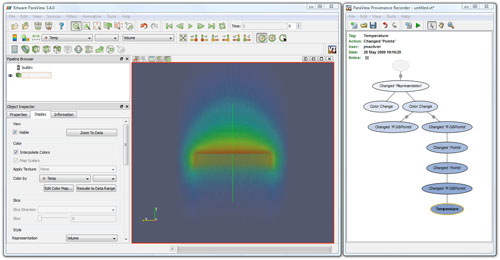 Kitware, Sandia National Laboratories and Los Alamos National Lab have released ParaView 3.6.2. The latest release now includes the VisTrails Provenance Explorer plugin in the Windows and Linux packages. VisTrails is an open-source scientific workflow and provenance management system developed at the SCI Institute that provides support for data exploration and visualization.
Kitware, Sandia National Laboratories and Los Alamos National Lab have released ParaView 3.6.2. The latest release now includes the VisTrails Provenance Explorer plugin in the Windows and Linux packages. VisTrails is an open-source scientific workflow and provenance management system developed at the SCI Institute that provides support for data exploration and visualization. The Fourth Paradigm: Data-Intensive Scientific Discovery
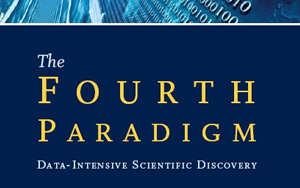 Four SCI faculty members, Chuck Hansen, Chris Johnson, Valerio Pascucci, and Claudio Silva contributed a chapter on visualization for data-intensive science in the recently released book The Fourth Paradigm: Data-Intensive Scientific Discovery.
Four SCI faculty members, Chuck Hansen, Chris Johnson, Valerio Pascucci, and Claudio Silva contributed a chapter on visualization for data-intensive science in the recently released book The Fourth Paradigm: Data-Intensive Scientific Discovery.ImageVis3D Mobile iPhone App Hits the News
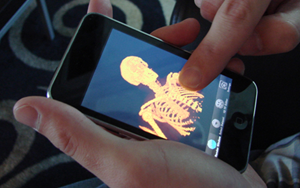 The release of ImageVis3D Mobile for the iPhone has received wide coverage.
The release of ImageVis3D Mobile for the iPhone has received wide coverage.In addition to a news story on KSL channel 5, it has generated a number of print articles such as:
The Daily Utah Chronicle:
"U researchers develop iPhone applications"
Tom Fogal and Jens Krüger's work on "ClearView" profiled on German ScienceBlogs.
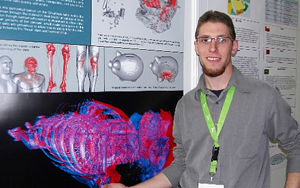 See full story on ScienceBlogs.
See full story on ScienceBlogs.
SCI Starts New Phase in the Warnock Engineering Building
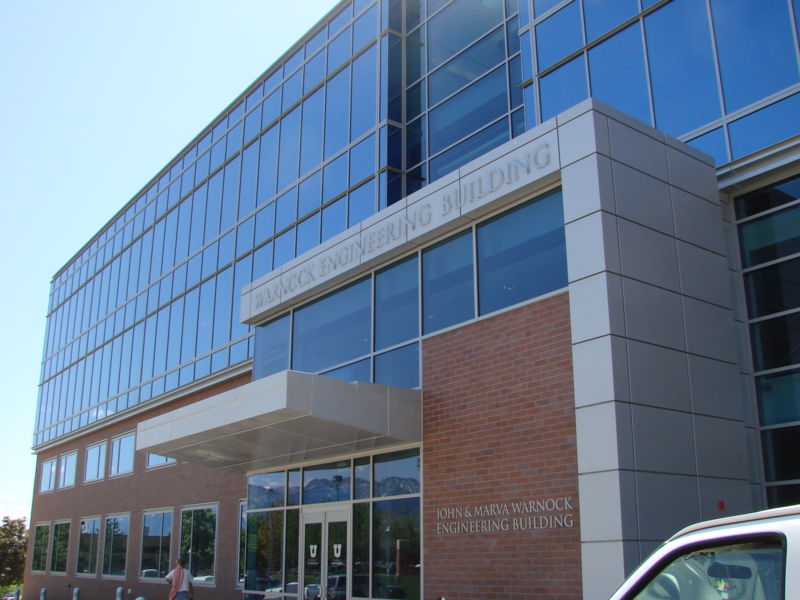 The Scientific Computing and Imaging Institute has begun a new phase of life in the John E. and Marva M. Warnock Engineering Building, a newly constructed, state of the art research facility.
The Scientific Computing and Imaging Institute has begun a new phase of life in the John E. and Marva M. Warnock Engineering Building, a newly constructed, state of the art research facility.The building is named for two primary donors who helped make it possible. John E. and Marva M. Warnock are both University of Utah alumni and founding pioneers of the information age. John Warnock is a co-founder of Adobe Systems, Inc., an industry leader in the area of graphics, publishing, web, and electronic document technologies. Marva Warnock is a designer and partner with Marsh Design in Palo Alto and also serves on the National Leadership Council for the Utah Museum of Fine Arts at the University of Utah. The project also benefited by a major contribution from Ed Catmull, another University of Utah alumnus who has been a major pioneer in computer technology. Dr. Catmull developed a series of fundamental technologies that made 3D computer graphics possible. He went on to found Pixar Animation Studios and now serves as President of both Pixar and Walt Disney Animation Studios. The Scientific Computing and Imaging Institute is very thankful for the generous contributions by the Warnock family, Ed Catmull and others who made our new home possible.
ImageVis3D Mobile now available
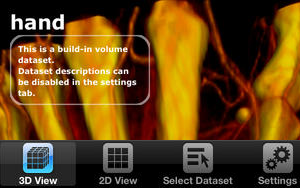 ImageVis3D Mobile for the iPhone is now available from Apple iTunes App store.
ImageVis3D Mobile for the iPhone is now available from Apple iTunes App store.
Chris Johnson Awarded Cyber Pioneer Award
 Chris Johnson, director of the Scientific Computing and Imaging Institute, will receive the prestigious Cyber Pioneer Award. Alan Hall, chair of the Utah Technology Council, will present the award at the 2009 Utah Cyber Symposium on September 25th. The award is designed to honor individuals who are pioneers in Utah’s high tech industry.
Chris Johnson, director of the Scientific Computing and Imaging Institute, will receive the prestigious Cyber Pioneer Award. Alan Hall, chair of the Utah Technology Council, will present the award at the 2009 Utah Cyber Symposium on September 25th. The award is designed to honor individuals who are pioneers in Utah’s high tech industry.
Claudio Silva Coauthor on 2nd Most Cited Paper in TVCG 15-Year History
 In celebration of the 15th anniversary of IEEE Transactions on Visualization and Computer Graphics, a top 10 list of the most cited papers was compiled to illustrate the success of the journal. Second on the list was a paper by Marc Alexa, Johannes Behr, Daniel Cohen-Or, Shachar Fleishman, David Levin, and Claudio Silva entitled, "Computing and Rendering Point Set Surfaces". To date, it has been cited 574 times according to Google Scholar. This paper introduced a new technique for modeling surfaces out of point samples by means of a moving least squares (MLS) projection approach. It also contain a number of applications, including techniques for resampling and rendering point sets. This general approach became increasingly popular following the publication of this paper.
In celebration of the 15th anniversary of IEEE Transactions on Visualization and Computer Graphics, a top 10 list of the most cited papers was compiled to illustrate the success of the journal. Second on the list was a paper by Marc Alexa, Johannes Behr, Daniel Cohen-Or, Shachar Fleishman, David Levin, and Claudio Silva entitled, "Computing and Rendering Point Set Surfaces". To date, it has been cited 574 times according to Google Scholar. This paper introduced a new technique for modeling surfaces out of point samples by means of a moving least squares (MLS) projection approach. It also contain a number of applications, including techniques for resampling and rendering point sets. This general approach became increasingly popular following the publication of this paper.
Chris Johnson and Ross Whitaker Present at the Library of Congress "Computing Research that Changed the World"
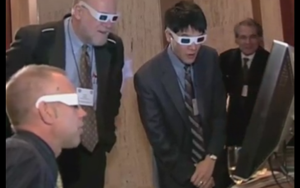 Chris Johnson - "Computing and Visualizing the Future of Medicine" (video not available)
Chris Johnson - "Computing and Visualizing the Future of Medicine" (video not available)Ross Whitaker - "Scientific Computing and Visualization for Medical Image Analysis"
Announcing VisTrails 1.3 and 1.2.2
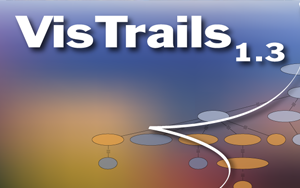 The VisTrails development team is happy to announce the release of two new versions of VisTrails. Version 1.3 contains lots of new features, improvements and a new version of the user's guide. Version 1.2.2 contains lots of bug fixes and it's basically a maintenance release of version 1.2.1. Both versions come with updated versions of VTK (5.4.2) and matplotlib. For a more detailed description see the release notes below. Both versions may be downloaded from the VisTrails wiki.
The VisTrails development team is happy to announce the release of two new versions of VisTrails. Version 1.3 contains lots of new features, improvements and a new version of the user's guide. Version 1.2.2 contains lots of bug fixes and it's basically a maintenance release of version 1.2.1. Both versions come with updated versions of VTK (5.4.2) and matplotlib. For a more detailed description see the release notes below. Both versions may be downloaded from the VisTrails wiki.
ImageVis3D Released
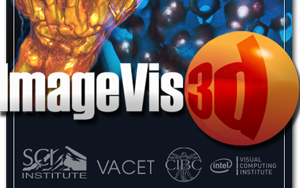 The ImageVis3D team is proud to announce the release of ImageVis3D 1.0!
The ImageVis3D team is proud to announce the release of ImageVis3D 1.0!ImageVis3D is a desktop volume rendering application which was designed to visualize large data. Support is available for multiple rendering modes, such as 1D and 2D transfer functions, isosurface rendering, as well as specialized modes such as MIP and slice views. On modern systems, ImageVis3D's GPU-accelerated rendering delivers incredible performance, while compatibility options exist to allow ImageVis3D to perform adequately on older systems.
ImageVis3D 1.0 supports Intel Macs 10.4 and up (10.5.7 highly recommended), Windows, and Linux. Download now.




